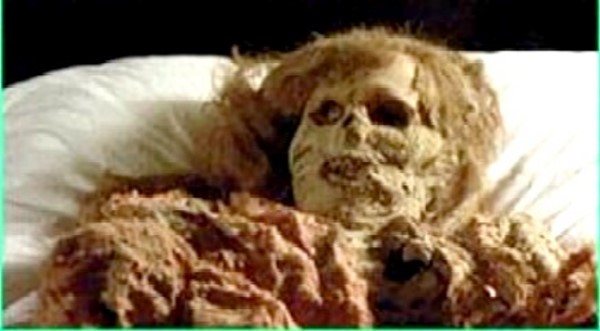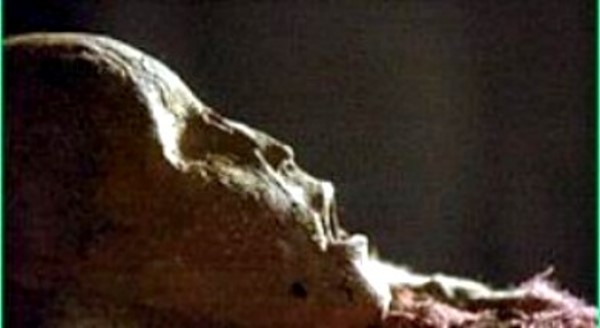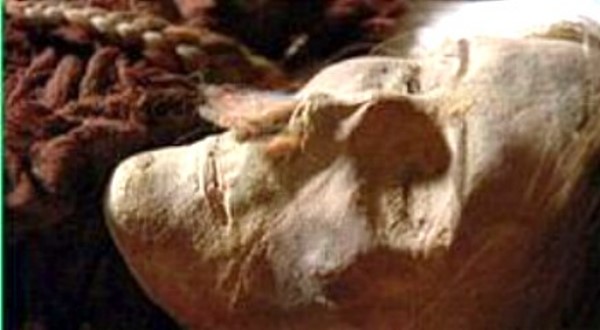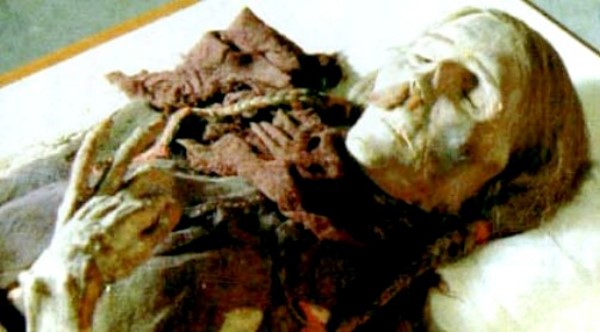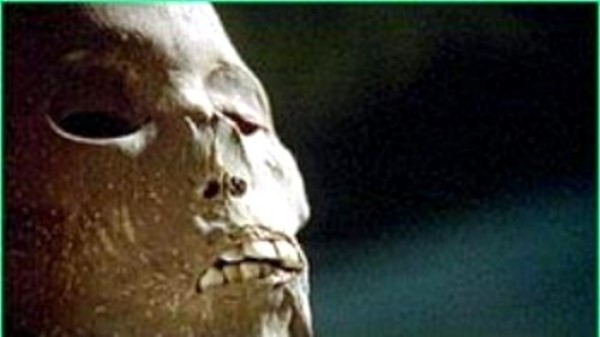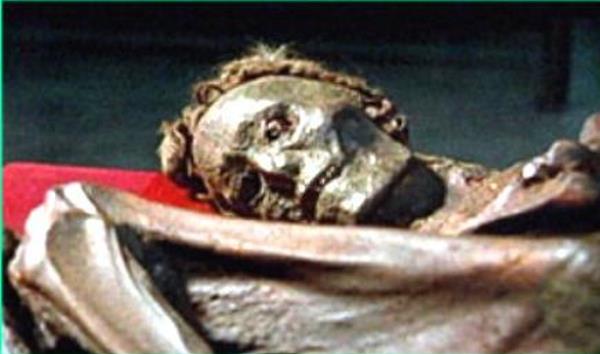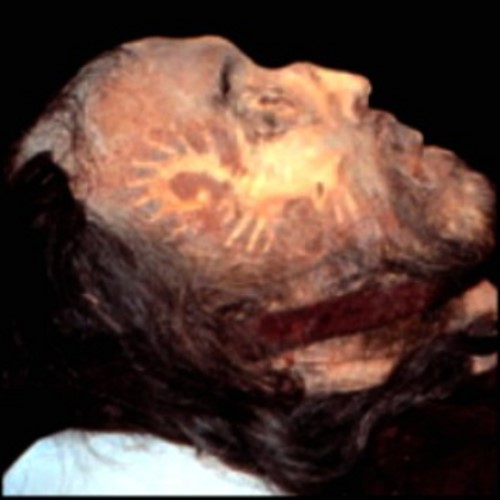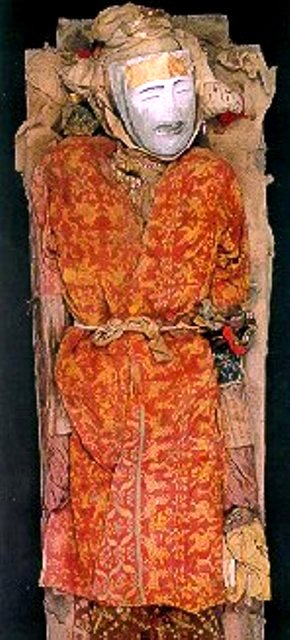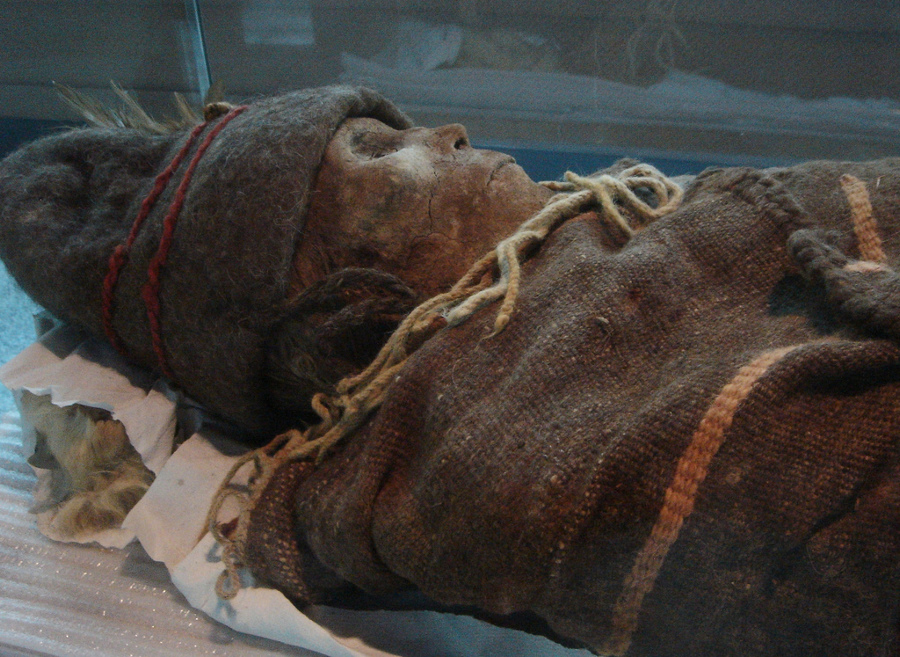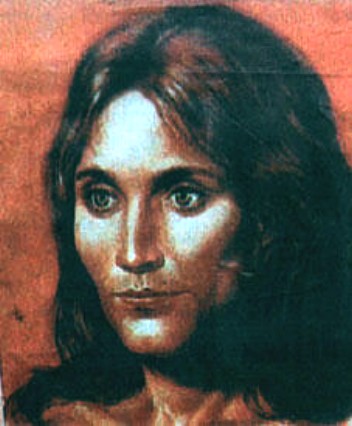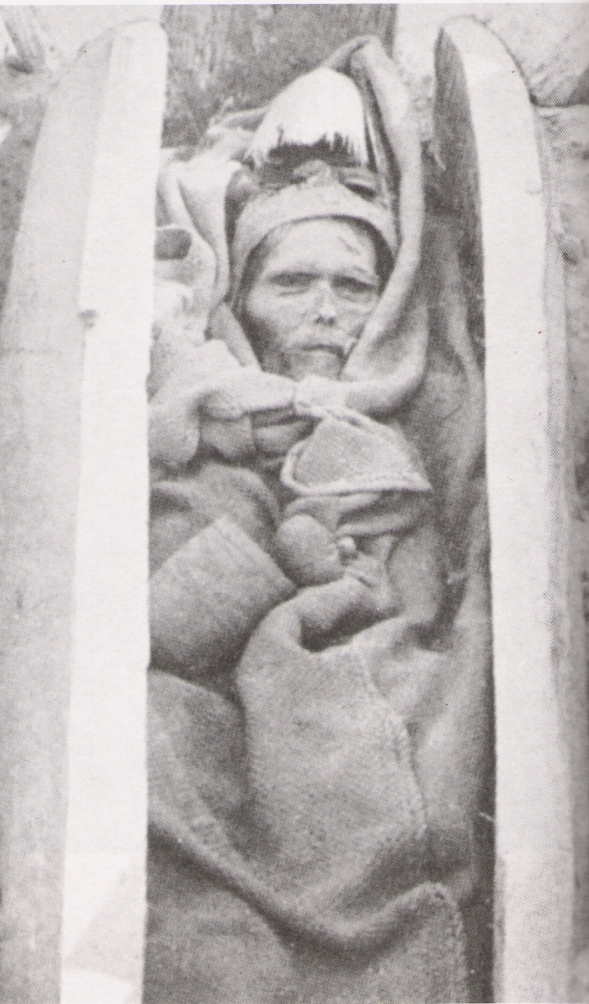|
|
|||||
|
Xinjiang Province of China ...
The Taklamakan Mummies (Tocharian mummies) In the late 1980's, perfectly preserved 3000-year-old mummies began appearing in a remote Taklamakan desert. They had long reddish-blond hair, European features and didn't appear to be the ancestors of modern-day Chinese people. Archaeologists now think they may have been the citizens of an ancient civilization that existed at the crossroads between China and Europe. Victor Mair, a specialist in the ancient corpses and co-author of “Mummies of the Tarim Basin”, said:"Modern DNA and ancient DNA show that Uighurs, Kazaks, Krygyzs, the peoples of Central Asia are all mixed Caucasian and East Asian. The modern and ancient DNA tell the same story.” The discoveries in the 1980s of the undisturbed 4,000-year-old ”Beauty of Loulan” and the younger 3,000-year-old body of the ”Charchan Man” are legendary in world archaeological circles for the fine state of their preservation and for the wealth of knowledge they bring to modern research. In the second millennium BC, the oldest mummies, like the Loulan Beauty, were the earliest settlers in the Tarim Basin. Mummies of "Tomb 2"
A Tocharian female mummy with long flaxen blond hair,
perfectly preserved in ponytails. Items of weaved material, identical
to Celtic cloth, definitively proved the Indo-European origins of the Tocharians,
who not only built the fantastic Silk Road cities which today lie deserted,
but who are also credited with bringing Buddhism, horses, the saddle, and
iron working to China. This mummy was approximately 40-years old, was found
in the main chamber of the same tomb. Her tall stature, high nose, and
red hair indicate that she was of European descent.
Source: http://www.pbs.org/wgbh/nova/chinamum/taklamakan.html |
|||||
|
..
Source: http://www.pbs.org/wgbh/nova/chinamum/taklamakan.html |
|||||
|
...
A family of immaculately preserved, 3,000-year-old caucasian
mummies were found in East Turkistan, in 1978. Though it was commonly believed
that the first contact between East Turkistan and the West occurred relatively
late in world history — around the middle of the second century B.C. —
carbon dating has shown that the Cherchen man and his family died 900 years
earlier. They were preserved naturally by the salty and dry Chinese landscape.
Source: http://tlc.discovery.com/convergence/mummies/countdown/countdown.html |
|||||
|
..
Meanwhile, Yingpan Man, a nearly perfectly preserved 2,000-year-old
Caucasoid mummy, discovered in 1995 in the region that bears his
name, has been seen as the best preserved of all the undisturbed mummies
that have so far been found.
Yingpan Man not only had a gold foil death mask -- a Greek tradition -- covering his blonde bearded face, but also wore elaborate golden embroidered red and maroon garments with seemingly Western European designs. His nearly 2.00 meter (six-foot, six-inch) long body is the tallest of all the mummies found so far and the clothes and artifacts discovered in the surrounding tombs suggest the highest level of Caucasoid civilization in the ancient Tarim Basin region. Source: http://www.khaleejtimes.com/ |
|||||
|
..
A 3,800 year old mummy discovered in the Xinjiang province of China nicknamed the Loulan Beauty. Particularly unique is that her facial structure is very close to that of European/ Caucasians which raised questions on how she ended up in this region of China so many years ago. To put this in context, she lived in the same period that Prophet Abraham lived. Her status and wealth can be seen by the feathers in her hat. And you can watch a video clip of the mummy here |
|||||
|
..
One of the most famous Tocharian mummies found, the so-called
"Beauty of Loulan"; and right, her face as reconstructed by an artist.
“Beauty of Loulan” The oldest mummies found in the Tarim Basin come from
Loulan located at the east end of the egg shaped Taklamakan Desert. Dressed
only in shades of brown, she was alive as early as 2000 B.C. during the
era of Abraham and the patriarchs. She died when she was about 40. Next
to her head there is a basket which contains grains of wheat.
|
|||||
|
..
Tarim Mummies The Tarim mummies are a series of mummies discovered in the Tarim Basin in present-day Xinjiang, China, which date from 1800 BCE to 200 CE. Some of the mummies are frequently associated with the presence of the Indo-European Tocharian languages in the Tarim Basin although the evidence is not totally conclusive. Archeological record At the beginning of the 20th century European explorers such as Sven Hedin, Albert von Le Coq and Sir Aurel Stein all recounted their discoveries of desiccated bodies in their search for antiquities in Central Asia. Since then many other mummies have been found and analysed, most of them now displayed in the museums of Xinjiang. Most of these mummies were found on the eastern (around the area of Lopnur, Subeshi near Turfan, Kroran, Kumul) and southern (Khotan, Niya, Qiemo) edge of the Tarim Basin. The earliest Tarim mummies, found at Qäwrighul and dated to 1800 BCE, are of a Caucasoid physical type whose closest affiliation is to the Bronze Age populations of southern Siberia, Kazakhstan, Central Asia, and the Lower Volga. The cemetery at Yanbulaq contained 29 mummies which date from 1100–500 BCE, 21 of which are Mongoloid—the earliest Mongoloid mummies found in the Tarim basin—and 8 of which are of the same Caucasoid physical type found at Qäwrighul. Notable mummies are the tall, red-haired "Chärchän man" or the "Ur-David" (1000 BCE); his son (1000 BCE), a small 1-year-old baby with blond hair protruding from under a red and blue felt cap, and blue stones in place of the eyes; the "Hami Mummy" (c. 1400–800 BCE), a "red-headed beauty" found in Qizilchoqa; and the "Witches of Subeshi" (4th or 3rd century BCE), who wore two foot long black felt conical hats with a flat brim. Also found at Subeshi was a man with traces of a surgical operation on his neck; the incision is sewn up with sutures made of horsehair. Surgery was considered heretical in ancient Chinese medical tradition. Many of the mummies have been found in very good condition, owing to the dryness of the desert and the desiccation of the corpses it induced. The mummies share many typical Caucasoid body features (elongated bodies, angular faces, recessed eyes), and many of them have their hair physically intact, ranging in color from blond to red to deep brown, and generally long, curly and braided. It is not known whether their hair has been bleached by internment in salt. Their costumes, and especially textiles, may indicate a common origin with Indo-European neolithic clothing techniques or a common low-level textile technology. Chärchän man wore a red twill tunic and tartan leggings. Textile expert Elizabeth Wayland Barber, who examined the tartan-style cloth, claims it can be traced back to Anatolia, the Caucasus and the steppe area north of the Black Sea. DNA sequence data shows that the mummies had a haplotype characteristic of western Eurasia in the area of Ukraine. A team of Chinese and American researchers working in Sweden tested DNA from 52 separate mummies, including the mummy denoted "Beauty of Loulan." By genetically mapping the mummies' origins, the researchers confirmed the theory that these mummies were of West Eurasian descent. Victor Mair, a University of Pennsylvania professor and project leader for the team that did the genetic mapping, commented that these studies were: ...extremely important because they link up eastern and western Eurasia at a formative stage of civilization (Bronze Age and early Iron Age) in a much closer way than has ever been done before.An earlier study by Jilin University had found an mtDNA haplotype characteristic of Western Eurasian populations with Europoid genes. In 2007 the Chinese government allowed a National Geographic team headed by Spencer Wells to examine the mummies' DNA. Wells was able to extract undegraded DNA from the internal tissues. The scientists extracted enough material to suggest the Tarim Basin was continually inhabited from 2000 BCE to 300 BCE and preliminary results indicate the people, rather than having a single origin, originated from Europe, Mesopotamia, India and other regions yet to be determined. The textiles found with the mummies are of an early European textile and weave type and are similar to textiles found on the bodies of salt miners in Austria of around 1300 BCE. Anthropologist Irene Good, a specialist in early Eurasian textiles, noted the woven diagonal twill pattern indicated the use of a rather sophisticated loom and, she says, the textile is "the easternmost known example of this kind of weaving technique." Mair states that "the earliest mummies in the Tarim Basin were exclusively Caucausoid, or Europoid" with east Asian migrants arriving in the eastern portions of the Tarim Basin around 1000 BCE while the Uyghur peoples arrived around the year 842. In trying to trace the origins of these populations, Victor Mair's team suggested that they may have arrived in the region by way of the forbidding Pamir Mountains about 5000 years ago. This evidence remains controversial. It refutes the contemporary nationalist claims of the present-day Uyghur peoples who claim that they are the indigenous people of Xinjiang, rather than the Han Chinese. In comparing the DNA of the mummies to that of modern day Uyghur peoples, Mair's team found some genetic similarities with the mummies, but "no direct links". About the controversy Mair has stated that: The new finds are also forcing a reexamination of old Chinese books that describe historical or legendary figures of great height, with deep-set blue or green eyes, long noses, full beards, and red or blond hair. Scholars have traditionally scoffed at these accounts, but it now seems that they may be accurate.Chinese scientists were initially hesitant to provide access to DNA samples because they were sensitive about the claims of the nationalist Uyghur who claim the Loulan Beauty as their symbol, and to prevent a pillaging of national monuments by foreigners. Chinese historian Ji Xianlin says China "supported and admired" research by foreign experts into the mummies. "However, within China a small group of ethnic separatists have styled themselves the descendants of these ancient people". Due to the "fear of fuelling separatist currents" the Xinjiang museum, regardless of dating, displays all their mummies both Tarim and Han, together. Posited origins Physical anthropologists propose the movement of at least two Caucasoid physical types into the Tarim basin, which Mallory & Mair (2000:317–318) associate with the Tocharian and Iranian (Saka) branches of the Indo-European language family, respectively. B. E. Hemphill's biodistance analysis of cranial metrics (as cited in Larsen 2002 and Schurr 2001) has questioned the identification of the Tarim Basin population as European, noting that the earlier population has close affinities to the Indus Valley population, and the later population with the Oxus River valley population. Because craniometry can produce results which make no sense at all (e.g. the close relationship between Neolithic populations in Ukraine and Portugal) and therefore lack any historical meaning, any putative genetic relationship must be consistent with geographical plausibility and have the support of other evidence. Han Kangxin (as cited in Mallory & Mair 2000:236–237), who examined the skulls of 302 mummies, found the closest relatives of the earlier Tarim Basin population in the populations of the Afanasevo culture situated immediately north of the Tarim Basin and the Andronovo culture that spanned Kazakhstan and reached southwards into West Central Asia and the Altai. It is the Afanasevo culture to which Mallory & Mair (2000:294–296, 314–318) trace the earliest Bronze Age settlers of the Tarim and Turpan basins. The Afanasevo culture (c. 3500–2500 BCE) displays cultural and genetic connections with the Indo-European-associated cultures of the Eurasian Steppe yet predates the specifically Indo-Iranian-associated Andronovo culture (c. 2000–900 BCE) enough to isolate the Tocharian languages from Indo-Iranian linguistic innovations like satemization. Hemphill & Mallory (2004) confirm a second Caucasoid physical type at Alwighul (700–1 BCE) and Krorän (200 CE) different from the earlier one found at Qäwrighul (1800 BCE) and Yanbulaq (1100–500 BCE): This study confirms the assertion of Han [1998] that the occupants of Alwighul and Krorän are not derived from proto-European steppe populations, but share closest affinities with Eastern Mediterranean populations. Further, the results demonstrate that such Eastern Mediterraneans may also be found at the urban centers of the Oxus civilization located in the north Bactrian oasis to the west. Affinities are especially close between Krorän, the latest of the Xinjiang samples, and Sapalli, the earliest of the Bactrian samples, while Alwighul and later samples from Bactria exhibit more distant phenetic affinities. This pattern may reflect a possible major shift in interregional contacts in Central Asia in the early centuries of the second millennium BCE.Mallory & Mair (2000:318) associate this later (700 BCE–200 CE) Caucasoid physical type with the populations who introduced the IranianSaka language to the western part of the Tarim basin. Mair concluded (Mair etc al, 2006): "From the evidence available, we have found that during the first 1,000 years after the Loulan Beauty, the only settlers in the Tarim Basin were Caucasoid. East Asian peoples only began showing up in the eastern portions of the Tarim Basin about 3,000 years ago, Mair said, while the Uighur peoples arrived after the collapse of the Orkon Uighur Kingdom, largely based in modern day Mongolia, around the year 842."Historical records and associated texts Tocharians The Indo-EuropeanTocharian languages also have been attested in the same geographical area, and although the first known epigraphic evidence dates to the 6th century CE, the degree of differentiation between Tocharian A and Tocharian B, and the absence of Tocharian language remains beyond that area, tends to indicate that a common Tocharian language existed in the same area during the second half of the 1st millennium BCE. Although Tocharian texts have never been found in direct relation with the mummies, their identical geographical location and common non-Chinese origin suggest that the mummies were related to the Tocharians and spoke a similar Indo-European language. The Tocharian were described as having full beards, deep-set eyes and high noses and with no sign of decline as attestation in the Chinese sources for the past 1,000 years. This was first noted after the Tocharian had come under the steppe nomads and Chinese subjugation. During the 3rd to 4th century CE, the Tocharian reached their height by incorporating adjoining states. Yuezhi In the much easterly geographical area, reference to the Yuezhi name in Guanzi was made around 7th century BCE by the Chinese economist Guan Zhong, though the book is generally considered to be a forgery of later generations. The attributed author, Guan Zhong described the Yuzhi, or Niuzhi, as a people from the north-west who supplied jade to the Chinese from the nearby mountains of Yuzhi at Gansu. A large part of the Yuezhi, vanquished by the Xiongnu, were to migrate to southern Asia in the 2nd century BCE, and later establish the Kushan Empire in northern Pakistan. Pliny the Elder (, Chap XXIV "Taprobane") reports a curious description of the Seres (in the territories of northwestern China) made by an embassy from Taprobane (Ceylon) to Emperor Claudius, saying that they "exceeded the ordinary human height, had flaxen hair, and blue eyes, and made an uncouth sort of noise by way of talking", suggesting they may be referring to the ancient Caucasian populations of the Tarim Basin: "They also informed us that the side of their island (Taprobane) which lies opposite to India is ten thousand stadia in length, and runs in a south-easterly direction--that beyond the Emodian Mountains (Himalayas) they look towards the Serve (Seres), whose acquaintance they had also made in the pursuits of commerce; that the father of Rachias (the ambassador) had frequently visited their country, and that the Seræ always came to meet them on their arrival. These people, they said, exceeded the ordinary human height, had flaxen hair, and blue eyes, and made an uncouth sort of noise by way of talking, having no language of their own for the purpose of communicating their thoughts. The rest of their information (on the Serae) was of a similar nature to that communicated by our merchants. It was to the effect that the merchandise on sale was left by them upon the opposite bank of a river on their coast, and it was then removed by the natives, if they thought proper to deal on terms of exchange. On no grounds ought luxury with greater reason to be detested by us, than if we only transport our thoughts to these scenes, and then reflect, what are its demands, to what distant spots it sends in order to satisfy them, and for how mean and how unworthy an end!" |
|||||
|
Cultural exchanges
The presence of Indo-European speakers in the Tarim Basin in the third or early second millennium BCE suggests that cultural exchanges occurred among Indo-European and Chinese populations at a very early date. It has been suggested that such activities as chariotwarfare and bronze-making may have been transmitted to the east by these Indo-European nomads. The Chinese explorer Zhang Qian, who visited Bactria and Sogdiana in 126 BCE, made the first known Chinese report on many regions to the west of China. In his accounts Parthia is named "?nx?" (Chinese: ??), a transliteration of "Arsacid", the name of the Parthian dynasty. Zhang Qian clearly identifies Parthia as an advanced urban civilization that farmed grain and grapes, made silver coins and leather goods; Zhang Qian equates the level of advancement of Parthia to the cultures of Dayuan (in Ferghana) and Daxia (in Bactria). Zhang Qian found Greek influences present in some of the kingdoms of this region. These theories run counter to the idea that the East and West developed civilizations independently, but suggest that some form of cultural exchanges took place. The supply of Tarim Basin jade to China from ancient times is well established, according to Liu (2001): "It is well known that ancient Chinese rulers had a strong attachment to jade. All of the jade items excavated from the tomb of Fuhao of the Shang dynasty, more than 750 pieces, were from Khotan in modern Xinjiang. As early as the mid-first millennium BCE the Yuezhi engaged in the jade trade, of which the major consumers were the rulers of agricultural China." Footnotes
|
|||||
|
4-30-5 http://story.news.yahoo.com/news?tmpl=story& From Ted Twietmeyer Ted From: Rense.com James Neff
Quite a lot of material on the giants of the Middle East can be found here. From: Rense.com |
|||||
| FAIR USE NOTICE: This page contains copyrighted material the use of which has not been specifically authorized by the copyright owner. Pegasus Research Consortium distributes this material without profit to those who have expressed a prior interest in receiving the included information for research and educational purposes. We believe this constitutes a fair use of any such copyrighted material as provided for in 17 U.S.C § 107. If you wish to use copyrighted material from this site for purposes of your own that go beyond fair use, you must obtain permission from the copyright owner. | |||||
|
|

